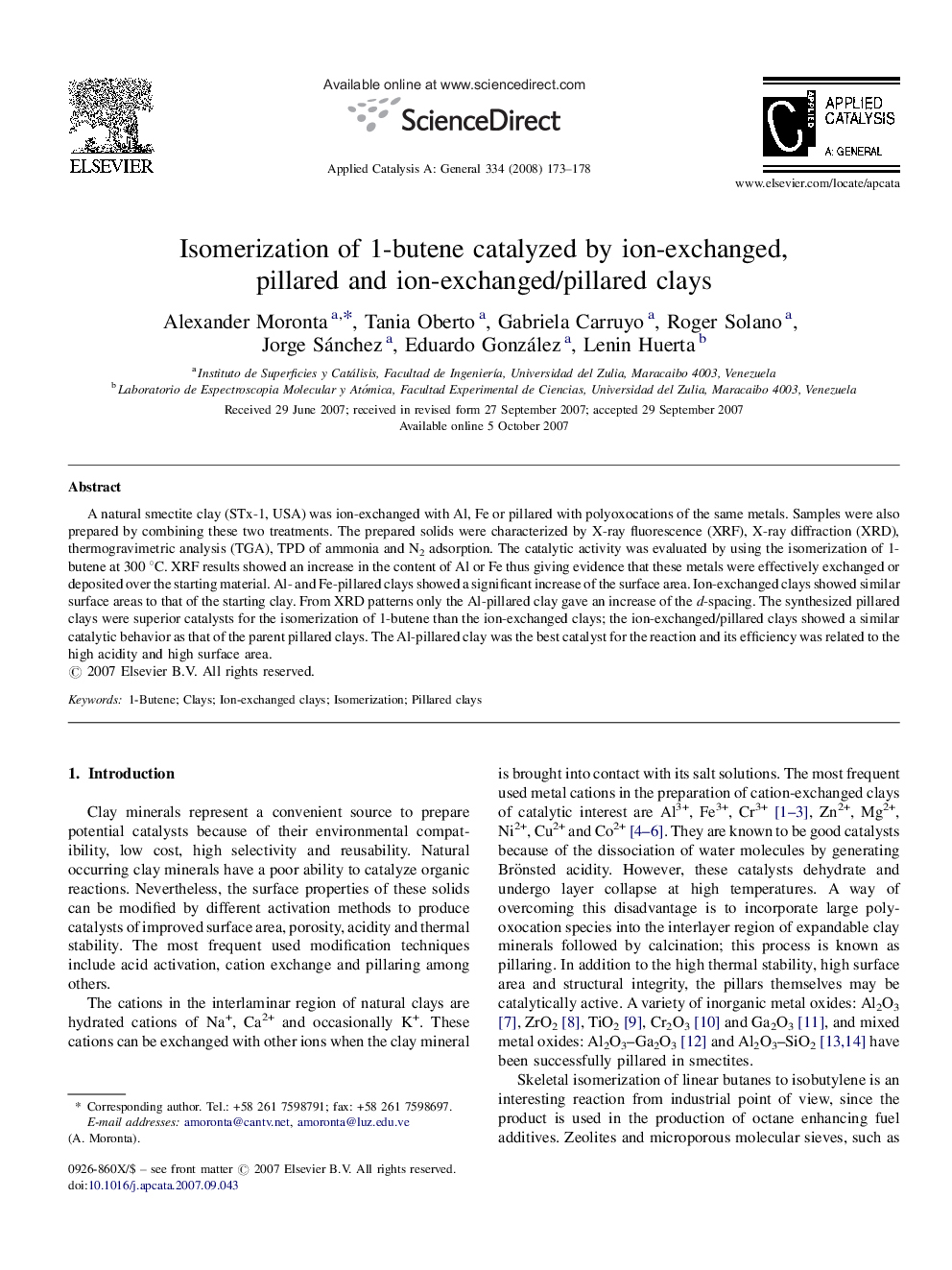| کد مقاله | کد نشریه | سال انتشار | مقاله انگلیسی | نسخه تمام متن |
|---|---|---|---|---|
| 43205 | 45958 | 2008 | 6 صفحه PDF | دانلود رایگان |

A natural smectite clay (STx-1, USA) was ion-exchanged with Al, Fe or pillared with polyoxocations of the same metals. Samples were also prepared by combining these two treatments. The prepared solids were characterized by X-ray fluorescence (XRF), X-ray diffraction (XRD), thermogravimetric analysis (TGA), TPD of ammonia and N2 adsorption. The catalytic activity was evaluated by using the isomerization of 1-butene at 300 °C. XRF results showed an increase in the content of Al or Fe thus giving evidence that these metals were effectively exchanged or deposited over the starting material. Al- and Fe-pillared clays showed a significant increase of the surface area. Ion-exchanged clays showed similar surface areas to that of the starting clay. From XRD patterns only the Al-pillared clay gave an increase of the d-spacing. The synthesized pillared clays were superior catalysts for the isomerization of 1-butene than the ion-exchanged clays; the ion-exchanged/pillared clays showed a similar catalytic behavior as that of the parent pillared clays. The Al-pillared clay was the best catalyst for the reaction and its efficiency was related to the high acidity and high surface area.
A natural smectite clay (STx-1, USA) was ion-exchanged with Al, Fe or pillared with polyoxocations of the same metals. Samples were also prepared by combining these two treatments. The prepared solids were characterized by X-ray fluorescence (XRF), X-ray diffraction (XRD), thermogravimetric analysis (TGA), TPD of ammonia and N2 adsorption. The catalytic activity was evaluated by using the isomerization of 1-butene at 300 °C. XRF results showed an increase in the content of Al or Fe thus giving evidence that these metals were effectively exchanged or deposited over the starting material. Al- and Fe-pillared clays showed a significant increase of the surface area. Ion-exchanged clays showed similar surface areas to that of the starting clay. From XRD patterns only the Al-pillared clay gave an increase of the d-spacing. The synthesized pillared clays were superior catalysts for the isomerization of 1-butene than the ion-exchanged clays; the ion-exchanged/pillared clays showed the same catalytic behavior as that of the parent pillared clays. The Al-pillared clay was the best catalyst for the reaction and its efficiency was related to its high acidity and high surface area. The total conversion correlated well with the acidity values determined by the desorption of cyclohexylamine and TPD of ammonia.Figure optionsDownload as PowerPoint slide
Journal: Applied Catalysis A: General - Volume 334, Issues 1–2, 1 January 2008, Pages 173–178